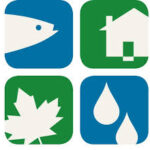Canton streams experience issues with bacteria
By GuestStreams in Canton continue to experience issues with elevated bacteria levels for the 2023 season over data from the last several years, according to a report from the Neponset River Watershed Association (NepRWA). Only two sites sampled by NepRWA met MassDEP swimming standards for E. coli bacteria across all six sampling events: the East Branch of the Neponset and Beaver Meadow Brook.
 In particular, Pequit Brook experienced the greatest increase in bacteria levels over prior years, trading places with Pecunit Brook. “Unfortunately, these tributaries of the Neponset River continue to have major problems with E. coli levels, especially during wet weather when runoff is worse,” said NepRWA Executive Director Ian Cooke. “This is dangerous because E. coli presence provides evidence of fecal contamination that could make people sick if they come into contact with the water during recreation.”
In particular, Pequit Brook experienced the greatest increase in bacteria levels over prior years, trading places with Pecunit Brook. “Unfortunately, these tributaries of the Neponset River continue to have major problems with E. coli levels, especially during wet weather when runoff is worse,” said NepRWA Executive Director Ian Cooke. “This is dangerous because E. coli presence provides evidence of fecal contamination that could make people sick if they come into contact with the water during recreation.”
Stormwater runoff carries high levels of E. coli when polluted with pet waste or other contaminants. Community members can help reduce these levels by cleaning up dog waste properly and disposing of it in the trash rather than leaving it on sidewalks, roadways, or lawns. Some pet owners mistakenly dispose of pet waste bags in the storm drains along roadways, thinking that these lead to wastewater treatment areas. However, in Canton and throughout the Neponset River Watershed, these drains lead directly to the nearest stream with no treatment.
People can help runoff infiltrate into the ground by planting rain gardens, installing rain barrels, or designing bioswales. Kristine Meaney, Canton’s stormwater manager, noted that the town again partnered with The Great American Rain Barrel Company this past spring to offer rain barrels to residents at a reduced cost. “Interested residents can visit the town’s website early next spring for more information on next year’s rain barrel program,” Meaney said.
According to the U.S. Environmental Protection Agency, the average dog produces approximately three quarters of a pound of waste per day. “If it is not picked up and sent to the incinerator, it is going directly into Canton’s brooks and ponds,” noted Canton Conservation Agent Regen Milani. “Dog waste is not fertilizer like cow manure. Dogs consume high amounts of protein, and their waste is highly acidic. It is harmful to lawn grass and loaded with bacteria. The chore of bagging and properly disposing of your pet’s waste might be irritating, but it is essential to being a good community member.”
Even on private property, stormwater runoff can flow off the lawn and carry pet waste into the street drainage system or an adjacent waterbody or wetland. Meaney added, “Through social media posts and other outreach methods, NepRWA and the town provide educational messages to dog owners about the importance of picking up after their dogs.”
However, stormwater may not be the only concern. Bacteria levels in Pequit Brook entering Reservoir Pond were high even in dry weather in both July and October. Because dry weather bacteria spikes are less likely to be caused by pet waste and runoff, this suggests ongoing issues with sewage infiltration in this particular stream.
“Using the sample data provided by NepRWA along with its own sampling data, the town of Canton is in the process of evaluating its storm drainage system,” Meaney said.
The report also describes water quality parameters important for wildlife, including phosphorus and dissolved oxygen. In comparison to 2020, phosphorus levels from Pequit Brook, just upstream of Reservoir Pond, have fallen but remain at the state-recommended level for water entering lakes or reservoirs. Beaver Meadow and Massapoag brooks, just upstream of Bolivar and Forge ponds, respectively, are similarly close to the recommended limit.
“Phosphorus is necessary for plant growth, but because it is naturally found in very low concentrations, it is often the ‘limiting’ resource in the freshwater environment,” explained Dr. Sean McCanty, NepRWA’s river restoration director. “We tend to see algal growth when phosphorus concentrations increase — because all the other required nutrients are already there ready to go.”
“Aside from not being great to look at, the real problem is that when these extra plants and algae eventually die, they get eaten by bacteria,” McCanty added. “This process consumes oxygen — in extreme circumstances the dissolved oxygen levels get so low that fish and other animals die, especially when they can’t swim to unaffected areas.”
There are two sites in Canton — Pequit Brook and Ponkapoag Brook — where phosphorus levels had a strong correlation with decreases in oxygen, suggesting eutrophication may be an issue for these areas. Meaney said the town has installed stormwater controls at the Earl Newhouse Waterfront, which can help remove nutrients and contaminants before water enters Reservoir Pond and Pequit Brook.
Dissolved oxygen is a major problem at both Pequit Brook and Beaver Meadow Brook, with water levels frequently dropping below 3 mg/L, a state of very low oxygen that can make large sections of the water uninhabitable by fish and other aquatic life. “We are concerned with the persistently low levels of oxygen in some of these sites, especially when combined with the impacts caused by drought,” McCanty said. “We hope in the future to look into whether improvements can be made to stream shading, maintaining good water flow, and find ways to prevent decaying material from sucking the oxygen out of these sites.”
The water quality monitoring program that collects this data is part of a larger watershed restoration effort. Throughout the Neponset River Watershed, efforts to improve water quality, restore river and salt marsh habitat, and reconnect the streams to allow fish passage are all underway. “Restoring and maintaining good water quality requires us to approach it from all sides,” said McCanty. “Removing obsolete dams raises oxygen levels, lowers temperatures, and also can allow fish to move freely. Flowing water can limit the amount of algae overgrowth, and treating our stormwater can remove phosphorus before it gets to the stream. Replanting along the riverbank also helps filter storm runoff and stabilize the banks, improving water quality for fishing, boating, and swimming.”
The Neponset River Watershed Association is a local environmental nonprofit that publishes an annual report on the health of the local streams and Neponset River in Canton and neighboring towns that drain into the Neponset River. The water quality data used in the report is collected as part of the association’s volunteer-based “Community Water Monitoring Network” program, which collects samples monthly from May to October to test for constituents that impact safety for recreation and wildlife.
For the full water quality report, visit neponset.org/town-water-quality-reports.
Short URL: https://www.thecantoncitizen.com/?p=126626










